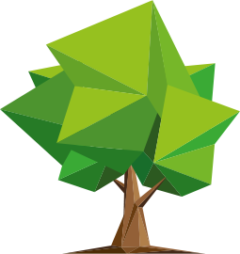Information
for youth leaders
Dear youth leaders,
In the context of the Reformation jubilee a plurality of working material and projects have been developed.
Why another project and why should you be interested in this project?
The characteristic of our project is the connection between the Reformation and local events. In almost every place in Germany a Luther tree has been planted at any Reformation anniversary.
Often the commemoration of the reformer Martin Luther was connected with other questions and events of the spirit of the time. Our project connects local and supra-regional history with religion and biology.
You can broach the issue in several subjects. The different working possibilities to research the history of a Luther tree, to care for such a tree, to plant a new tree or to create a Geocache offer manifold possibilites for practical work. The local media will love to publish this work and by our website you can present your school supra-regional and even globally.
One possibility of entering the topic is a “barometer of opinions”. Students can playfully broaden their knowledge about Luther and the Reformation jubilee. At the same time you find out about your students level of knowledge.
“Barometer of opinions”
Students position themselves at two previously defined points in the room and answer yes-no-questions. Possible questions:
- Luther lived in the 16th century.
- Luther intended the division of the church.
- Martin Luther was the founder of the protestant church.
- Luther nailed the 95 theses at the castle church in Wittenberg.
- Martin Luther was married.
- Martin Luther joined a monastery.
- Martin Luther studied law.
- Martin Luther was struck by lightening.
After the students have received some basic information different topics can be further developed. There is also more material. You can either work with the mythological or ecological aspects of tree species, or work with Martin Luther’s biography or even with his connection with trees or you can pick the history of the different Reformation anniversaries.
Besides their ecological meaning trees also have a mythological one.
Typical tree species being planted as Luther trees are elm trees, lime, oak or apple trees. The meaning of the context has hanged during the centuries. At this point a discussion in small groups or with individuals is recommended. Possible questions are:
- What meaning do trees haveIn pre-Christian time?
- In the Middle Ages?
- In the bible?
- In the Modern Age?
Why have certain tree species been chosen?
What is the meaning of trees in the ecosystem?
You will find further information on the website under history.
Information regarding the mythology of trees can be found here: holzinfo.de
Especially during the last years an enormous amount of material has been created. We want to point out on two websites with free instruction material:
Gute Unterrichtmaterialien zum Leben und wirken von Martin Luther finden Sie auch auf der Seite des RPI Loccum
No it’s getting practical. It depends in the amount of work you have planned or if there is a Luther tree close to your school. Working groups are recommended.
Find a regional Luther tree
You can search the Internet or ask local historians about positions of Luther trees. Further information are to be found here: Find trees.
You can also ask locals and search for pictures of the Reformation time. Try to find out something about the tree species. Some trees were bred out of seeds from the Luther tree in Wittenberg. It is also interesting to find out why a certain tree species has been chosen and which mythological or historical meaning belongs to it. Often tree species have been chosen only because they are very old of age.
Process the information
You can produce a short film clip (no longer than 3 minutes) or write a text (maximum 1 page) to present your information in an interesting and comprehensible way. We publish these information as well as your data on our website. You will receive a QR-code from us, which can be placed directly at the tree or link with a geocache.
Geocache
Another working group can manage the geocache. One student should be willing to publish this Cache under his name on the website: geocaching.com
When you send us these data we would publish it with the gathered information about the tree on our homepage.
Plant a tree
If there is not a tree in your neighbourhood it is also possible to plant an own tree. The place should be open to the public. The easiest way is to plant the tree on the ground of the parish or the school. If you choose a public place you should talk to the municipality. This may take 2 to 3 months. This project needs 10 to 20 minutes parallel to the normal classes.
Care for a tree
Especially newly planted trees need special care in the first years. Either you and your class care for the tree or you ask volunteers of a church congregation. Maybe the public post for parks is willing to join this idea. This is a long-term project that needs attention from time to time. It is worth the effort because students get a connection between the history of the Reformation, ecology and local actions.
Suggestions and
Material
The homepage’s design enables youngsters to work directly with it and be supported in how to conduct a Luther tree project.
We resigned from producing own material. At some points we point to free and class material on other websites.
Basic suggestions and advice on how do design a Luther tree project are compiled by us.
We are happy to receive your feedback!


